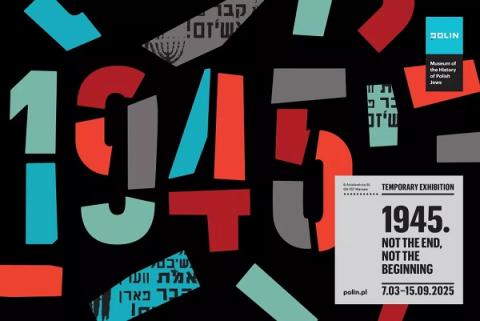Tragic pages of the post-war history of Polish Jews
The end or the beginning?
In the general understanding, World War II ended in 1945. This should have been a time of euphoria, and yet, for Jewish men and women grappling with loss and desolation, it was above all a moment of decision-making—what next?
Individual stories
The dilemmas and life paths of Polish Jews after the war will be explored in the exhibition by tracing the stories of selected individuals. Through personal biographies, we will uncover strategies for navigating a new reality—returning home, emigrating, attempting to rebuild the Jewish community, engaging in political activism, or living in hiding. Visitors will learn, for example, about the life of a little girl Dora Zoberman, who had lost her closest relatives before the war ended; how teenage Pinchas Bursztyn, found among the dead in a lime pit after the liberation of Auschwitz, managed to survive; or what the journey back to Poland from the USSR was like for the Pertman family.
Who will open the door?
How did people feel when, having returned to their hometowns after traumatic experiences, they discovered that their homes had long been occupied, their belongings taken away, and all traces of their community erased? They recognized matzevot—Jewish tombstones—used to pave the streets; they found repurposed fragments of Torah scrolls in everyday objects. Polish neighbors often greeted the returning Jews with reluctant indifference, hostility, or even violence. Yet, despite it all, they stayed. They believed that their future in Poland was not yet determined and made every effort to rebuild their community.
In the exhibition "1945. Not the End, Not the Beginning," we will also learn about the fate of those who chose to leave—a decision made by the overwhelming majority. Between 1944 and 1946, over 200,000 Jews left Poland. They refused to live in what felt like a cemetery, not willing to bear the sense of desolation and the ever-present danger fueled by postwar antisemitism.
The difficult reality of Polish Jews after 1945 will be illustrated through the exhibition’s iconography—photographs, documents, letters, leaflets, and personal mementos. The minimalist and contemplative exhibition set design will highlight the stories told by the materials on display, conveying what the protagonists experienced daily—feelings of emptiness, uncertainty, and threat.
A different perspective
Engaging with the personal testimonies of those who survived the Holocaust is a deeply moving experience and a challenging lesson in history. The exhibition confronts what has often been silenced or left on the margins of grand historical narratives—the Jewish perspective on the end of the war.
Let’s listen to these voices. Perhaps we will come closer to answering questions such as: What would have changed if everyone had emigrated? What would Poland look like today if the Jews had stayed?

